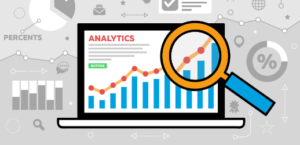Table of Contents
Every stellar marketing campaign starts with identifying and analyzing a company’s target audience. Without this valuable piece of data, a business has no way of connecting with its customers and is doomed to fail.
There’s no way around it—if you want your brand to be successful, you will have to define, market, and reach your target audience. Let’s dive into the best practices of how to define your target audience.
What is a target audience?
Your target audience is the specific demographic of consumers most interested in the product or service your brand is selling.

These groups can be identified through various measures and are often categorized based on (but not limited to) attributes such as age, gender, ethnicity, and social standing.
Why is identifying a target audience important?
Over the past decade, the internet has become a massive conglomerate of brands, creators, and an oversaturation of content. Everything revolves around the web now, which has its advantages and disadvantages.
The main advantage is that you can connect with customers easier than ever. The drawback is there’s so much content and competition that your marketing campaigns are less likely to be seen.

This content competition is why you’ve got to identify your niche and market directly to them. If you don’t define and reach out to your target audience, consumers will likely never come into contact with your brand.
How to define your target audience
The hard part isn’t always reaching your target audience. Sometimes, it’s merely defining that audience. You must do a good bit of research to identify your consumer base, but doing so will be a valuable asset in your marketing campaigns.
There are several ways you can define your brand’s target audience. Here are eight of the most effective methods.
Analytics
One of the best methods for gaining insights on website traffic demographics and stats is to review your mobile analytics. With this tool, you can get reports on valuable data, like consumer click rates, site traffic, and touchpoints.

There are many other analytic software and solutions out there, so you’ll have to find the one that works best for your brand.
Study competition
One of the first steps you can take is to check out your top competitors. If they’re thriving, they’re doing something right and marketing to the right people.
You can capitalize on their success by understanding their customers and why they buy what that company sells. Go through product pages, reviews, etc., and pick out what kind of people are coming to them.
Reach out to customers
What’s the best way to increase engagement and find out who your customers are? Reach out to them directly. Conduct customer interviews with incentives and implement pop-up surveys on your main website.
Go through reviews and gain an understanding of who is buying your products or services. If your brand has a history, go through previous marketing campaigns and determine what aspects worked well and weren’t as effective.
Work within a niche
As we established before, the internet is an expansive domain with billions of users daily. There’s no way you can feasibly market to everyone, nor should you attempt to do so.
Instead, try to identify a small group of people that may be interested in your brand. Working in niches is beneficial because there’s more interpersonal engagement and customers typically retain a higher degree of loyalty.
When working with small groups, you’ll find it’s vastly easier to analyze customers and determine what they want, allowing you to allocate your resources appropriately.
Market research
You should always commit to keeping track of the market and any trends that affect it. To ensure you stay on top of industry changes, you’ll need to conduct thorough market research in your specific field and affiliated sectors.
Here are a few things you should try to take note of when conducting research:
- The average age and percentage of male and female customers
- The tone of voice in advertisements
- Industry growth and growth projection
- Economic market trends
Develop personas
Personas are fabricated profiles of a brand’s customers based on research and data. These personas help marketers and product managers understand who they’re marketing to on a more personal level.
Personas are not created solely to imitate the buying habits of the average customer. Persona profiles also typically include the ideal audience’s physical attributes, hobbies, and interests.
Social media
Everything revolves around social media, meaning platforms such as Twitter, Instagram, and TikTok are hubs of crucial information.
Try to find hashtags within your niche and find out who’s posting content as a low-cost method of gaining personal information about who your target audience is.
Additionally, use your social media accounts to your advantage. Determine who follows you, who likes your posts, and who’s most engaged with your profiles.
Offer pop-up surveys after purchases
Do you know the most effective way of defining your target audience? It’s inquiring about the people who are currently buying from you.
An excellent method is adding a post-survey pop-up at the end of each purchase, asking to leave a short review. Obviously, not everyone will answer, but those who do often leave sincere and honest thoughts.
You can also provide follow-up emails prompting customers to engage with you and your brand. Sometimes, reaching out to them as a person (and not as an automated message) can make a world of difference and get your information from a customer who would otherwise ignore your brand.
Also Read This: How to Do Digital Marketing?
Final thoughts
Ultimately, everything you need to know about defining your target audiences boils down to data-driven research and customer engagement.
Once you find your niche, you’ll create a brand with many loyal customers and a high buyer retention rate, which is essential to building a solid business. Defining your target audience starts early and is a continuous, active process of new trends and optimization.
Need some help finding your target audience? Mobile analytics can help provide your brand with inside perspective, real-time data, and insightful customer reports.











